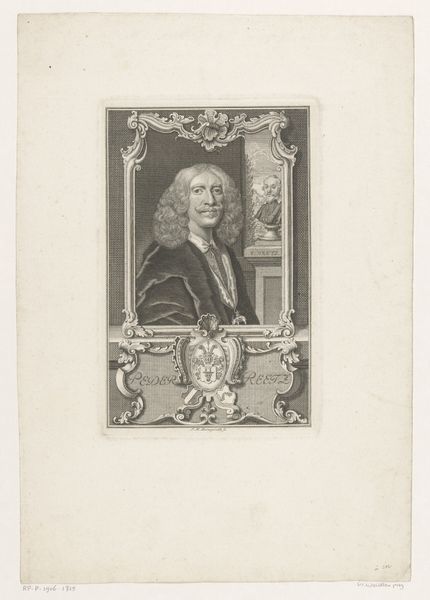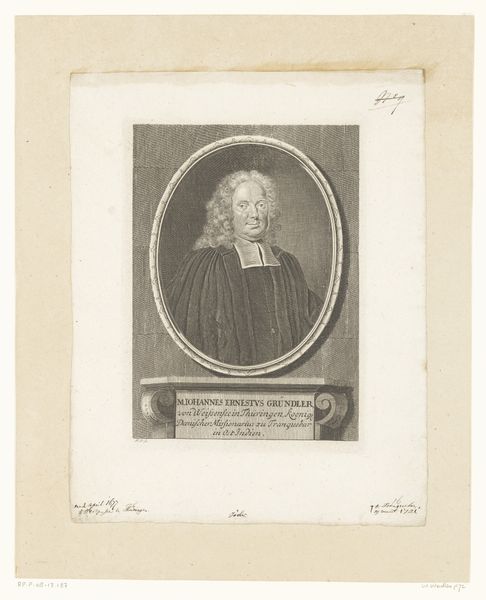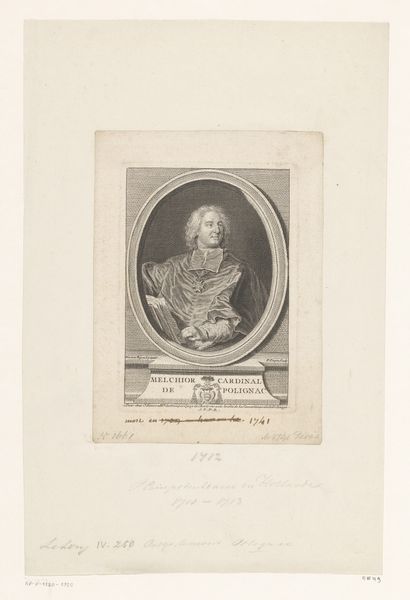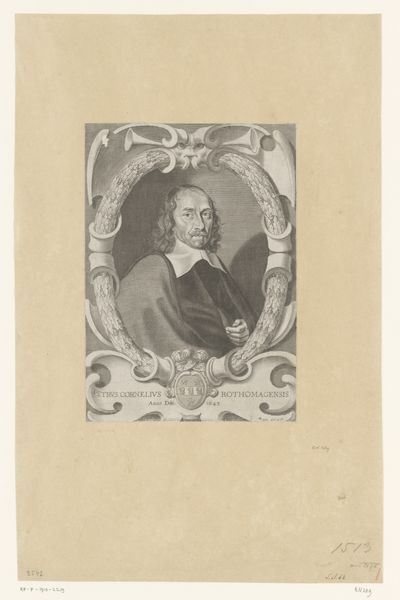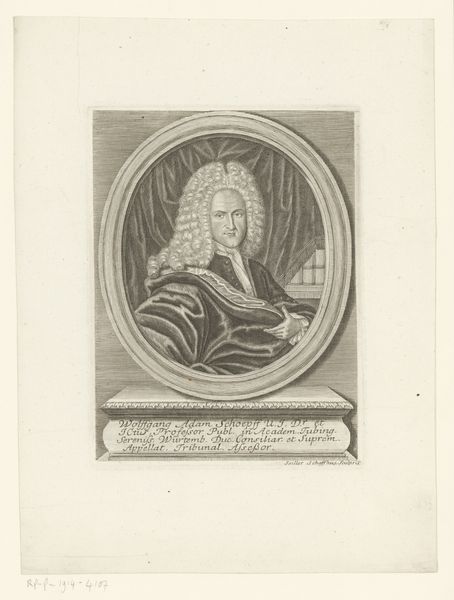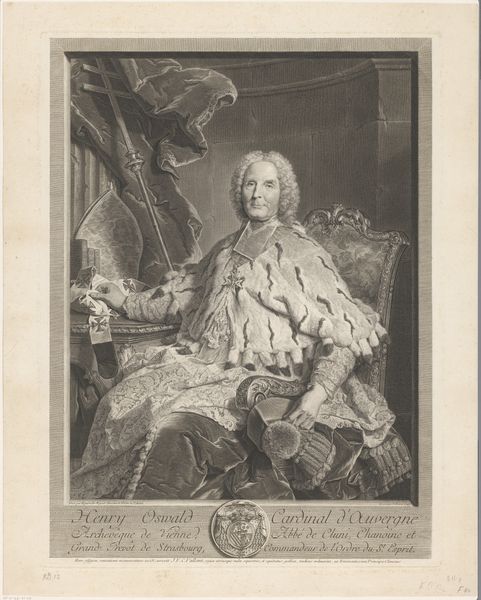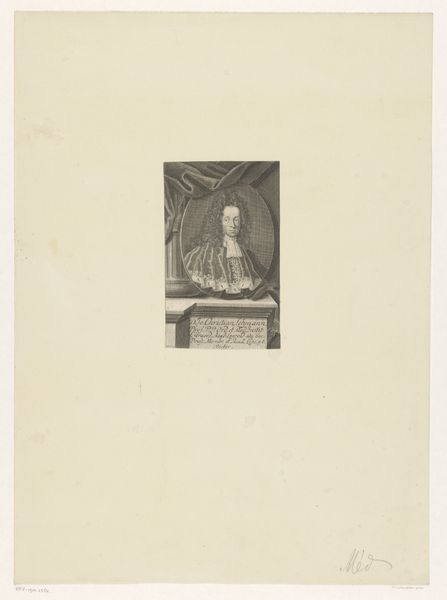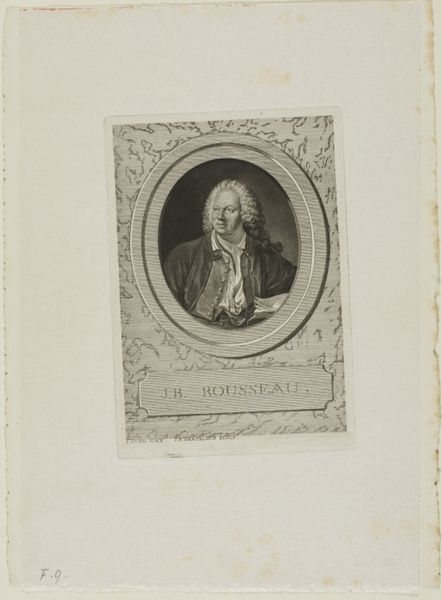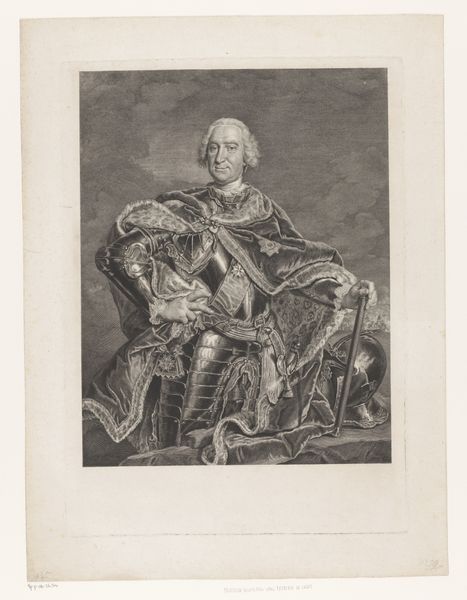
Dimensions: height 199 mm, width 149 mm
Copyright: Rijks Museum: Open Domain
Editor: Here we have a print from somewhere between 1732 and 1799, a portrait of Adam Christian Thebesius, by Andreas Höger. The engraving seems to vibrate with importance but there is a skull resting right next to him! How should we be looking at this? Curator: That skull! It’s a 'memento mori,' a reminder of mortality, chuckling at the edges of all the Baroque grandness. Höger is playing with that tension— the elaborate wig and robe versus the stark fact of death. You see it often in Dutch Golden Age art. A bit like life photobombing death’s selfies, eh? Editor: So it's not meant to be morbid exactly, but more a...realistic take? Is it the fashion for a while, in portraits, to remind yourself that everything dies? Curator: Precisely. Think of it as a fashionable philosophical flex. It was about acknowledging both earthly achievements and the transient nature of existence. Vanitas, they called it. But tell me, what does that combination - vanity *and* memento mori- *do* to your feelings toward this subject? Editor: It kind of humanizes him, almost? Like underneath the powdered wig, he knew what was coming. Now, knowing the artist highlighted the vanitas aspect changes the way I perceived his message. Curator: Right? It’s an eternal inside joke and reflection at the same time! The longer you look, the more the portrait feels like a little theatrical performance about being and ceasing to be. Editor: Well, now I see much more than just a portrait of a bewigged gentleman; thank you!
Comments
No comments
Be the first to comment and join the conversation on the ultimate creative platform.
